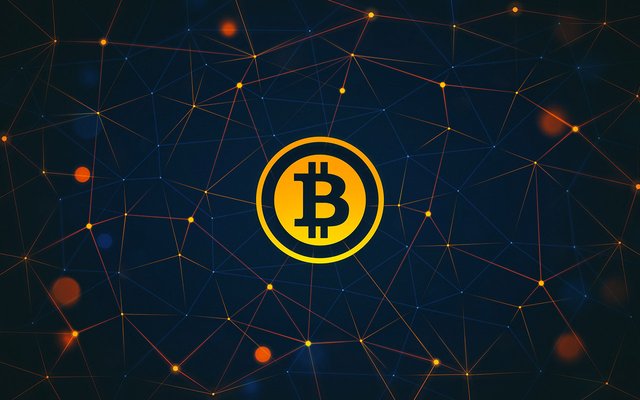What is Bitcoin?
What is Bitcoin you ask?
So you are considering dipping your toes into the wonderful world of cryptocurrencies but a bit unsure what you’re getting yourself into? Don’t sweat it, because if they are anything like me(dum… errrr umm.. uniformed) I would hazard a guess that a large portion of new investors really don’t have any idea what they bought into.
Well luckily for you my friend, you have taken a step in the right direction. For in googling “what is bitcoin” you have stumbled upon this gem of an article where I will learn you good on exactly what you need to know about this magical internet money that is changing the world as we know it.

Not so at a Glance..
If I was to sum up bitcoin as short as possible, it would go something like:
Bitcoin is the first decentralized digital currency written into an internet protocol which allows users to send value across the blockchain over a communications channel.
Buzzwords everywhere.. so let us unpack that a little bit shall we?
Decentralized: Distributing administrative power from a single entity(think banks and corporations) over a network of users(think the size of the internet). This means the currency is not owned or governed by a single organization.
Digital Currency: Although the monetary value of Bitcoin is only a fraction of what is capable of, bitcoin is best known for its store of value(think digital gold). As with all currencies/resources, Bitcoin is bought and sold at a price discovered through the subjective value theory(think of valuing a new TV more than the $1000 it costs). There are several benefits to completing transactions using bitcoin including:
Internet Protocol: Bitcoin is a new internet protocol(a whaaaat…) or in simpler terms a set of governing rules which are established for operations on a network. Although you might not understand the concept we use these protocols each and every day of our lives be it:
Now Bitcoins protocol was defined in 2008 by an individual using the name Satoshi Nakamoto in an 8-page whitepaper. This white paper outlined a protocol which allowed transactions of value across the internet. It was proposed as a solution to the problem of double spending over a peer-to-peer network. It used cryptography to establish trust over a fully transparent digital ledger distributed across the blockchain.
Now this is a very basic explanation of the protocol, but if you are interested in learning more I would recommend watching this video which walks you through the entire whitepaper.
The Blockchain: As stated above, the blockchain is at its heart a transparent decentralized ledger or database which records and verifies all transactions across the network. This ledger is taken as an absolute truth, free from deletion and revision, with every transaction being validated and stored since its creation into forever.
This theory of absolute truth is confirmed by a series of individuals termed “miners”. These minors use massive amounts of computing power to verify transactions as well solve complicated mathematical problems to which the are rewarded for “mining” with bitcoin.
Again this is a glossed over version, for a more fully complete explanation of the blockchain I would recommend this video which perfectly visualizes the concept.
Value Over a Communications Network: Money, or a store of value, is really only the first application of bitcoin and the blockchain. 1 Bitcoin is divisible by 100 Million units, with each unit being labelled a “Satoshi” after Bitcoins creator. Each Satoshi is both programmable and individually identifiable via digital signature allowing it to represent whatever an individual requires(stock in a company, certificate of ownership, a quantity of a commodity, or even a vote).
Additionally, bitcoin allows “smart contracts” to be written into the code which applies if/or/than statements to form a digital contract. This allows for various applications to be constructed that again skip the step of a middle man. Smart contracts can be programmed to give shares of a company upon the deposit of bitcoin, withdraw bitcoin monthly for payment of bills/services, or even program a service upon completion will be paid; or refunded if uncompleted or completed late.
Soooo yeah… That at a glance is Bitcoin
To reiterate, Bitcoin is a digital currency without boundaries written in the form of an internet protocol allowing the transfer of value(both monetary and intangible) over a communications network ensuring complete transparency and accuracy through the use of blockchain technology.
Pheeeewwwww… I think I got it all
Now you get to decide what you think, world changing technology or a flop? Only time will tell.
If you liked this article and want to see more please give me a follow on:
https://www.youtube.com/channel/UCXuajhn1RU31l_NaZBvFKPQ
https://twitter.com/cryptbrocrypto
https://medium.com/@CryptbroCrypto
where I’ll be pumping out weekly content on all things cryptocurrency related.
Great post, very well explained.
thanks, appreciate the feedback!
Congratulations @cryptbrocrypto! You received a personal award!
You can view your badges on your Steem Board and compare to others on the Steem Ranking
Do not miss the last post from @steemitboard:
Vote for @Steemitboard as a witness to get one more award and increased upvotes!